
When temperatures drop, there is nothing more appealing than trying some of the most typical Spanish winter recipes. During these months it is the best time to try out hearty recipes that will help us get warmed up. Do you know some of the most famous and delicious ones?
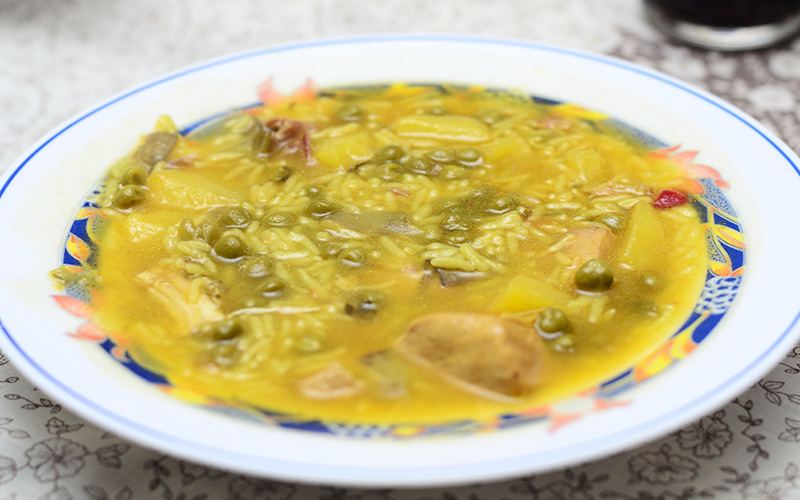
Just by looking at this dish you will warm up. Gurullos are a pasta made with wheat flour, saffron and water. They are used in many recipes in Almería’s cuisine to make pucheros. One of the best known winter recipes is that of gurullos with rabbit, although it is sometimes replaced by hare, and snails.
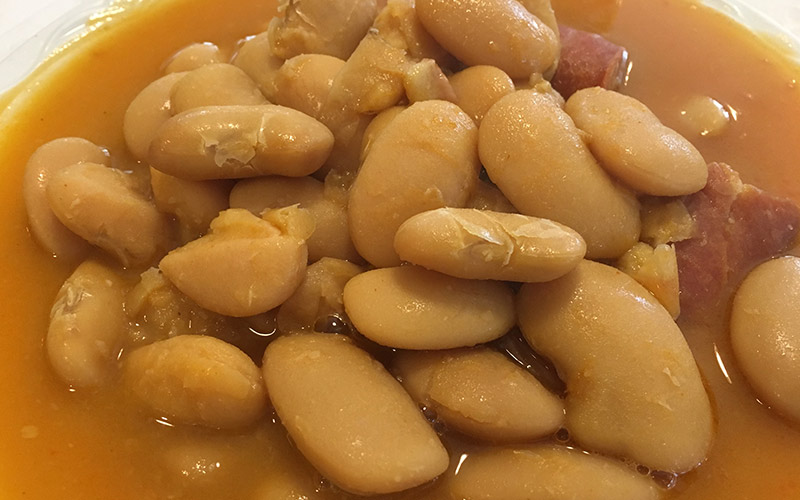
Another of the most typical winter recipes in Spain are the judiones de La Granja. In particular, it is a variety of bean that has a larger size and is grown in the Real Sitio de San Ildefonso, in Segovia. It is believed that this bean was brought from America. At first it was used to feed the pheasants in the gardens of La Granja.
Nowadays it is the main ingredient in recipes such as stews accompanied by sausages. It is usually cooked in clay pots. One of the most outstanding recipes is that for judiones de la Granja with partridge. Not to be confused with the faba de la Granja, used to prepare the Asturian fabada. They are so appreciated that a festival is held around these beans with a Designation of Origin.
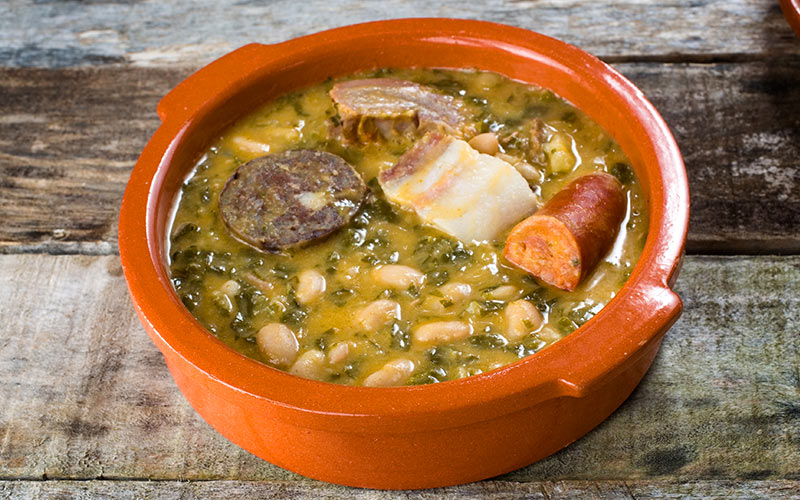
When temperatures drop there is nothing like enjoying a good cocido montañés (“mountain stew”) in Cantabria. This stew is made with cabbage, white beans and a generous compango. The latter consists of ribs, chorizo, bacon and blood sausage. Unlike other stew recipes such as the lebaniego or the madrileño, the cocido montañés is not prepared with chickpeas. Moreover, all the ingredients are eaten at the same time.
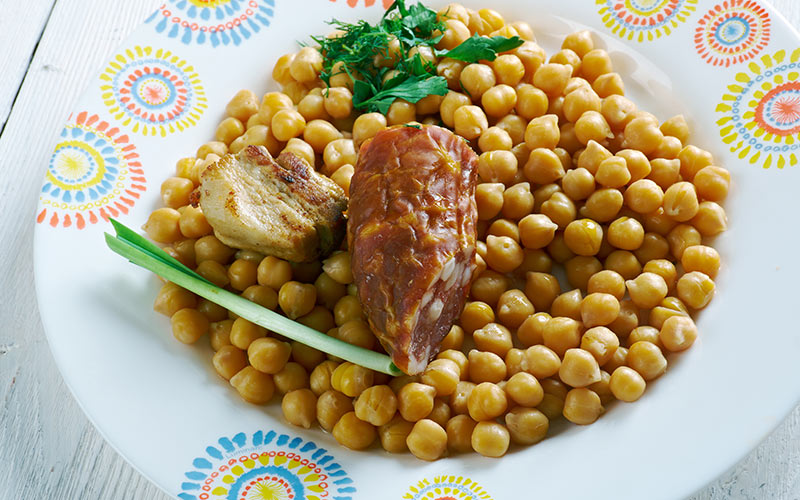
We continue in Cantabria to taste another of the typical winter recipes, the cocido lebaniego. This is a recipe from the region of Liébana, a stew made with potatoes, cabbage, chickpeas from Potes, the compango, beef and stuffing. The composition of the latter consists of breadcrumb dough, chorizo, egg and parsley. It is included as one of the typical winter recipes to try in our Gastronomic Route through Cantabria.

If we talk about Madrid‘s cuisine, there is nothing more representative than a proper dish of cocido madrileño. In the same way, as far as typical winter recipes are concerned, there is nothing that represents it better than a cocido madrileño. The chickpea arrived in Spain during the Carthaginian period. In the Middle Ages it was used in Sephardic stews. Although its origins are humble, little by little its demand increased thanks to the incorporation of this dish into restaurant menus.
As with other stews, it is taken as a unique dish due to its size and the caloric contribution of the ingredients. The cocido madrileño is served in three different ways: first the broth, second the chickpeas with the potatoes and vegetables and third the meat. The latter is known as the viandas.
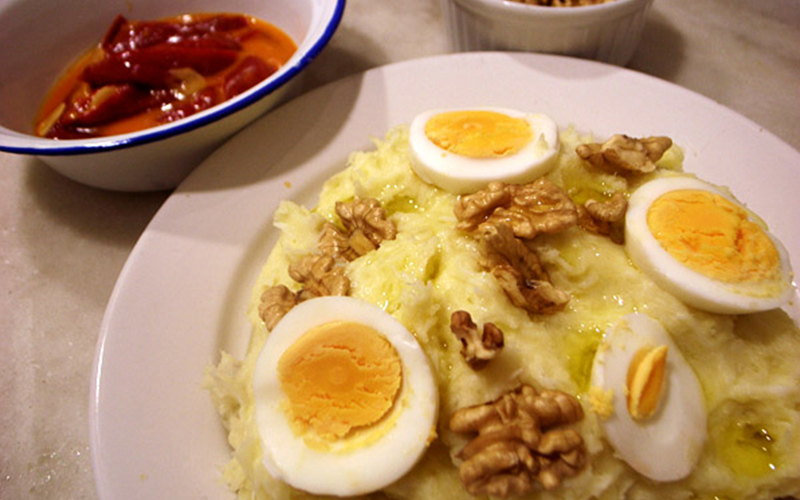
Also known as ajomortero or ajoarriero, atascaburras is a recipe from Castile-La Mancha. It is one of those perfect recipes for fighting the cold, as it is usually eaten when it snows. There are written references to this recipe dating back to the 17th century.
It is said that the recipe for atascaburras was created by two shepherds who, surprised by a heavy snowfall, were left isolated. They only had potatoes and cod bones, so they had to crush everything. When they returned home, they said they had tasted a meal that was “harta hasta las burras” (“too much even for donkeys”). It is said that the name “atascaburras” comes from this anecdote, although there are others that also point to the merit. Their ingredients are boiled potatoes, salted cod and olive oil. It is decorated with nuts and sometimes with eggs.
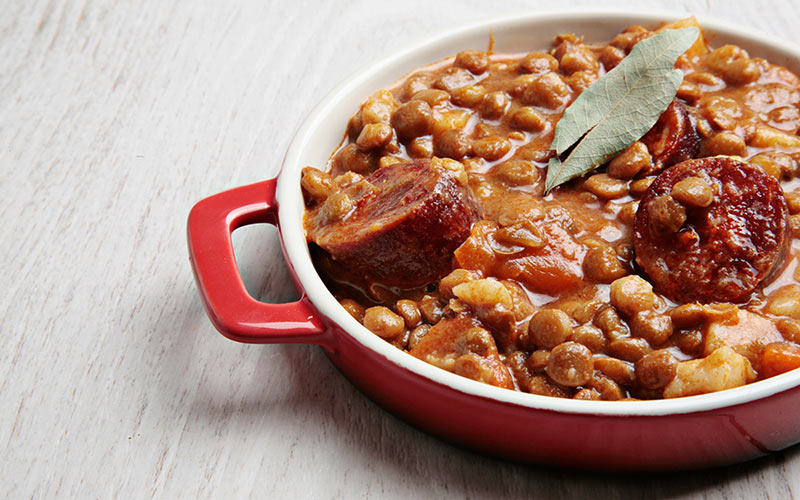
Easier to prepare and more affordable than other typical winter recipes are lentil soup with chorizo. This preparation is traditional in the province of Ávila, although its popularity has spread throughout Spain. It is a recipe that can be prepared with different meat varieties.
To make the recipe the most common is to use pardina lentils. Sometimes Cantimpalos chorizo, blood sausage or bacon are used. To achieve the best results, it is interesting to flavour with laurel.
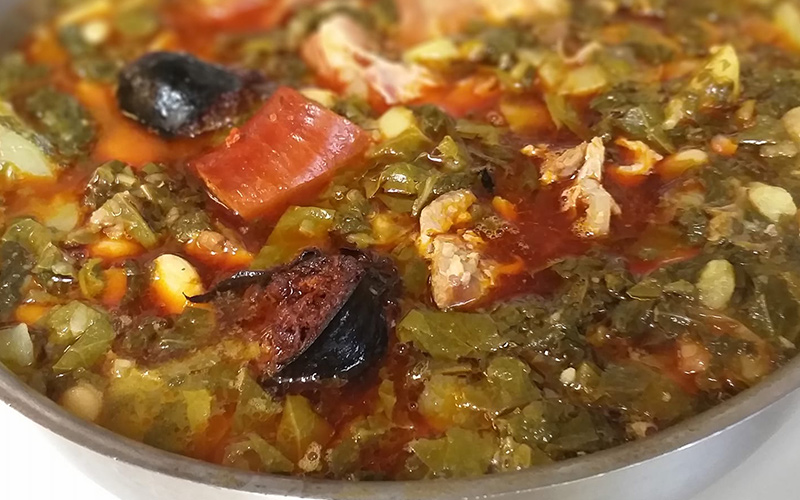
Facebook La Fueya de Tomás
It is not surprising that many of the typical winter recipes come from the north of Spain, as these are the areas with the lowest temperatures. This is the case of Asturias and its unmistakable pote asturiano, a recipe that makes anyone who tastes it fall in love. If you decide to start a Gastronomic Route through Asturias, this should be the first dish.
Its name comes from the dish in which it was prepared, that is, a pote or pot arranged on the fire. The essence of the pote asturiano is the berzas (variety of cabbage), the white beans, the potatoes and the compango. The elaboration process takes between two and three hours. In the past, the pote asturiano was made with chestnuts and nowadays there are still villages in Asturias that prepare it in this way. It should not be confused with the Asturian fabada.
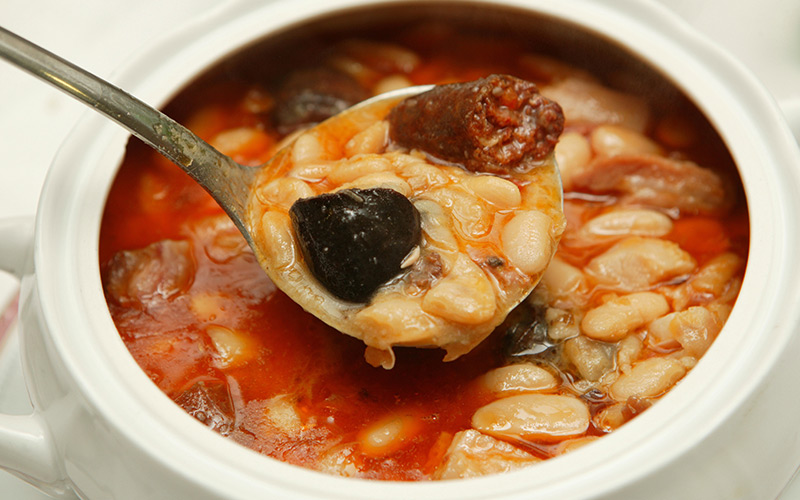
The Asturian fabada is one of the typical winter recipes in which its preparation is almost an art. It is believed that its consumption began in the 16th century, when fabes were planted in the province. However, written references to this dish do not appear until the 19th century. To prepare the fabada, the La Granja variety is used. It is a perfect bean for this dish as it is very buttery. Its cultivation occupies almost three thousand hectares in Asturias.
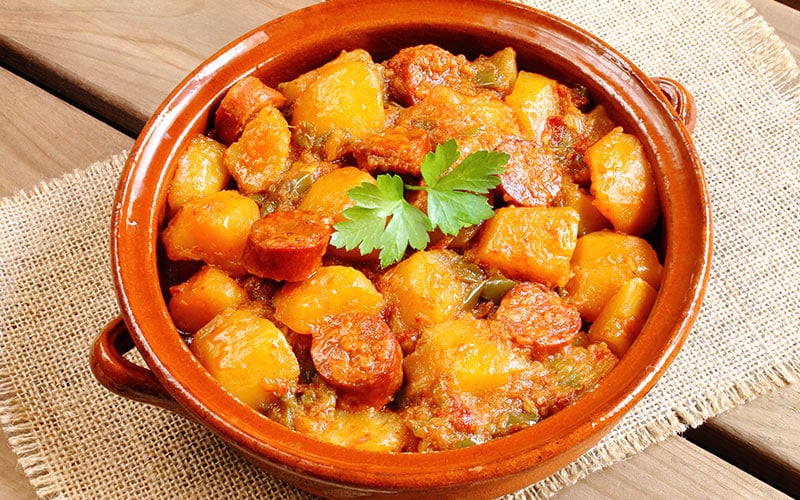
When it gets very cold, one of the typical winter recipes that is most appreciated is the Rioja-style potatoes. It is a humble dish but full of flavour, whose origin is tied to the countryside and the harvest. As you can see at first sight the ingredients are chorizo, potatoes, choricero peppers and paprika. The taste is accentuated if it is left to rest from one day to the next.
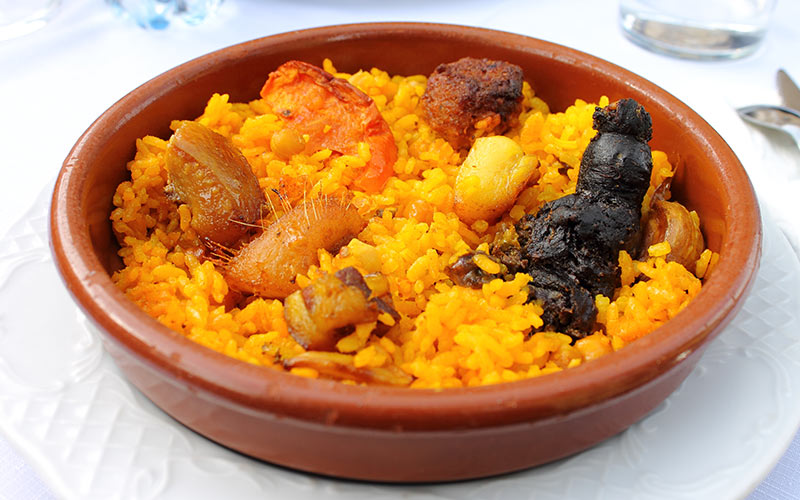
Although baked rice can be eaten all year round, it is an ideal winter dish. Cooked in the oven, it is prepared in a clay pot. It is a traditional dish from the Valencian Community, whose origin was based on the pretext of making use of the remains of the stew. Thus, its ingredients are chickpeas and different pork products such as blood sausage, chorizo, ribs…
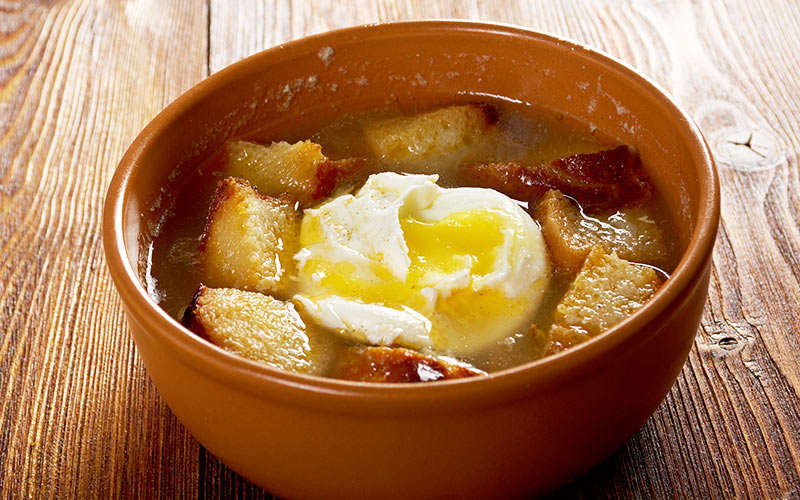
Garlic soup or sopa castellana is a dish that is eaten all over Spain, although its origin is in Castile and León. It is a recipe born out of necessity, as it emerged in the post-war period. In this way, the leftover hard bread from the previous day was used. Therefore, it is a recipe that has become part of the Spanish recipe book. Garlic soup is also widely consumed during Lent and Holy Week.

From the Galician cuisine we cannot forget a dish like the lacón con grelos. It can be found in the bars and restaurants of this community all year round, but in the beginning it was a recipe that was consumed during Carnival, as it is the best time for the grelos. The lacón is the front leg of the pig, the protagonist of this recipe along with the grelos. It also contains chorizo, vegetables and potatoes.
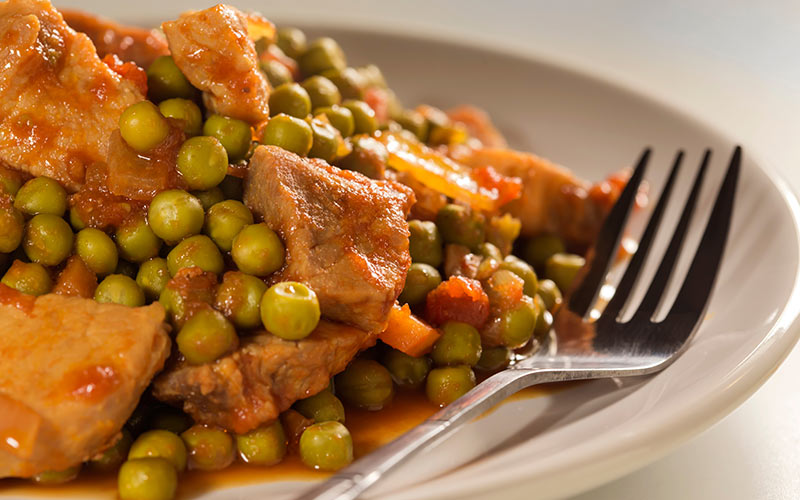
Among the typical winter recipes, with infinite forms, we must highlight the stews. Castilian cuisine provides a very specific example, that of carcamusas, made mainly in Toledo. It has lean pork accompanied by seasonal vegetables, such as peas. There is nothing like a few slices of bread to dip in the sauce.
Some sources place its origin in the Bar Ludeña in Toledo. According to popular culture, it originated here from a pun. The bar was usually attended by older men known as the carcas, as well as by young girls whom they considered to be muses (“musas”). As both audiences liked it, the dish was called carca-musas.